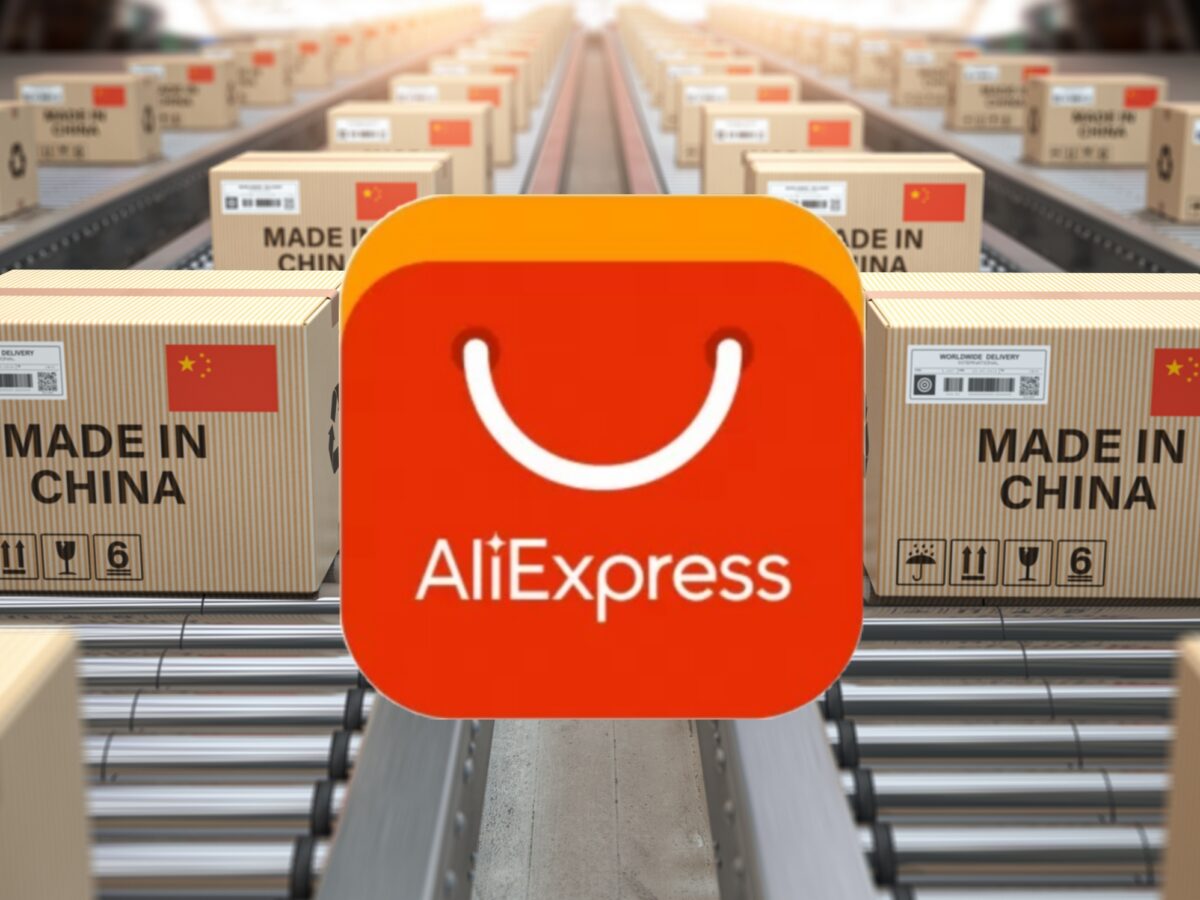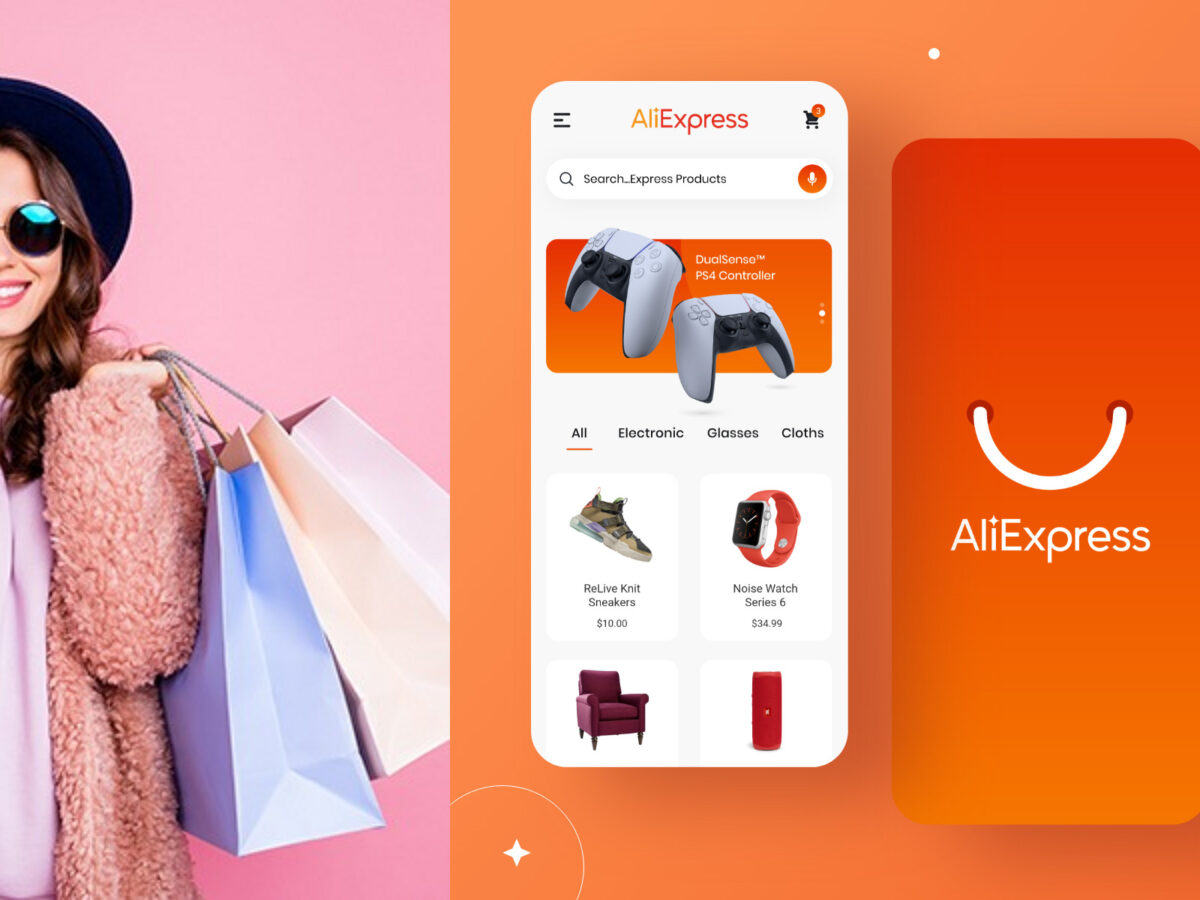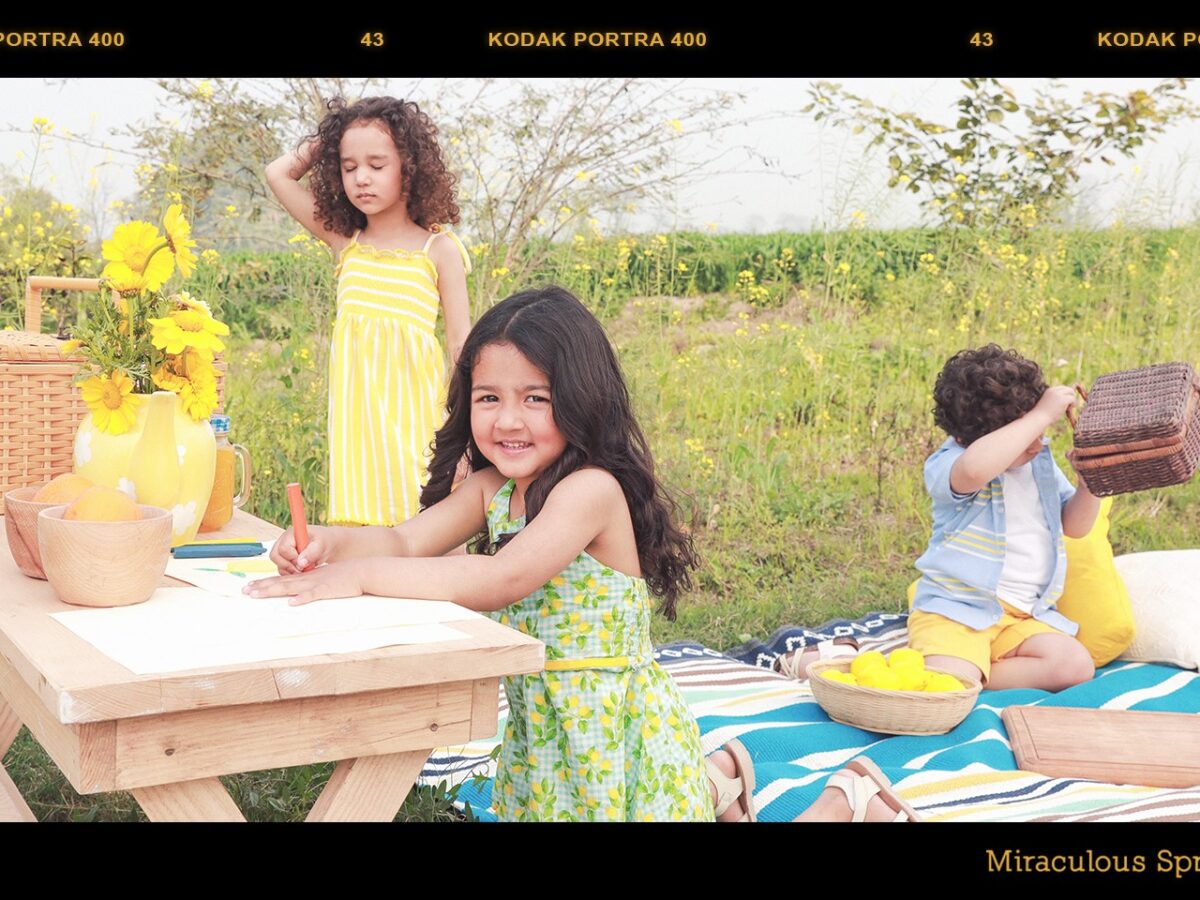Uncover the ‘AliExpress Blueprint’—your roadmap to understanding how it works, country-specific tips, and insider deals. This comprehensive guide demystifies the platform, offering strategic insights for tailored shopping experiences. Navigate the AliExpress landscape with confidence, armed with exclusive tips and insider knowledge to unlock maximum savings on every purchase.
Category: Children
The Ultimate Buying Guide for Children: Top Brands and Budget Options
Buying items for children can be overwhelming for parents or caregivers, especially with the plethora of options available in the market. From toys to clothes, gadgets to school supplies, there are endless choices to consider. This comprehensive buying guide will provide essential information about top brands and budget options for children’s products, helping you make informed purchasing decisions.
Toys
Toys are a vital part of a child’s development and playtime. It is crucial to choose age-appropriate toys that are safe, educational, and fun. Here are some top toy brands to consider:
- Lego: Known for its classic building sets, Lego offers a wide range of toys that encourage creativity and imagination.
- Hasbro: Hasbro is a well-known toy company that produces popular brands such as My Little Pony, Transformers, and Play-Doh.
- Mattel: Mattel is another renowned toy company that offers popular toys such as Barbie, Hot Wheels, and Fisher-Price.
If you’re on a budget, consider these budget-friendly toy options:
- Melissa & Doug: Melissa & Doug offers a range of wooden and educational toys that are affordable and great for children’s learning and development.
- Green Toys: Green Toys produce eco-friendly toys made from recycled plastic. They are affordable, durable, and safe for children.
Clothes
Children’s clothing can be expensive, but there are ways to find quality clothes without breaking the bank. Here are some top clothing brands to consider:
- Gap Kids: Gap Kids offers a range of stylish and comfortable clothing for children, from baby to pre-teen.
- H&M Kids: H&M Kids offers affordable and trendy clothing for children of all ages.
- Zara Kids: Zara Kids offers stylish and high-quality clothing for children, with a focus on sustainable fashion.
If you’re on a budget, consider these budget-friendly clothing options:
- Old Navy Kids: Old Navy Kids offers affordable and comfortable clothing for children, with a wide range of sizes and styles.
- Walmart: Walmart offers budget-friendly clothing for children, from everyday basics to special occasion outfits.
School Supplies
As children head back to school, it’s important to stock up on essential school supplies. Here are some top school supply brands to consider:
- Crayola: Crayola offers a range of high-quality art supplies, including crayons, markers, and colored pencils.
- Mead: Mead offers a range of school supplies, including notebooks, planners, and folders.
- Ticonderoga: Ticonderoga produces high-quality pencils that are durable and reliable.
If you’re on a budget, consider these budget-friendly school supply options:
- Up & Up: Up & Up is a budget-friendly brand that offers a range of school supplies, including notebooks, pens, and pencils.
- Dollar Tree: Dollar Tree offers affordable school supplies for just $1 each, including notebooks, pencils, and folders.
Choosing the right products for children can be challenging, but with this comprehensive buying guide, you’ll have the information you need to make informed purchasing decisions. Whether you’re looking for toys, clothes, or school supplies, there are top brands and budget-friendly options available to meet your needs.
Saving Extra Money on Children with AskmeOffers: Latest Offers, Deals, and Promo Codes on Top Brands
AskmeOffers is a platform that offers exclusive discounts, deals, and promo codes on a range of products, including children’s items. By using AskmeOffers, you can save extra money on your purchases, allowing you to provide the best for your children without breaking the bank.
Latest Offers and Deals
AskmeOffers regularly updates its website with the latest offers and deals on top brands in children’s products. From toys to clothes, school supplies to gadgets, you can find a range of discounts that can help you save money on your purchases. For example, you can find offers such as:
- Flat discounts on select products
- Percentage discounts on total purchase
- Buy one, get one free offers
- Free shipping on orders over a certain amount
Promo Codes
In addition to discounts and deals, AskmeOffers also provides exclusive promo codes that can help you save extra money on your purchases. Simply enter the promo code at checkout, and the discount will be applied to your total purchase. Some popular promo codes on AskmeOffers for children’s products include:
- 10% off on first-time purchases
- $5 off on orders over a certain amount
- Free gift with purchase
Stay Up-to-Date
AskmeOffers also helps you stay up-to-date with the latest news on discounts and sales for children’s products. By subscribing to the AskmeOffers newsletter or following them on social media, you can receive regular updates on the latest deals and offers. This ensures that you never miss out on a chance to save extra money on your children’s purchases.
AskmeOffers is a valuable platform for parents or caregivers who want to save extra money on children’s products. With the latest offers, deals, and promo codes on top brands, you can provide the best for your children without breaking the bank. By staying up-to-date with the latest news on discounts and sales, you can make informed purchasing decisions and save money in the long run.
Children’s Product Comparison: Features, Pricing, and Reviews of Popular Brands
Choosing the right products for children can be a daunting task for parents or caregivers. This product comparison provides an overview of features, pricing, and reviews of popular brands in different categories of children’s products, helping you make informed purchasing decisions.
| Category | Product | Brand | Features | Price | Reviews |
|---|---|---|---|---|---|
| Toys | Building Sets | Lego | Develops creativity and imagination, durable, educational | $10 – $200 | 4.5/5 on Amazon |
| Action Figures | Hasbro | Popular characters, interactive play, durable | $5 – $50 | 4/5 on Amazon | |
| Clothing | Jeans | Levi’s | Durable, stylish, comfortable | $20 – $50 | 4.5/5 on Amazon |
| T-Shirts | Gap Kids | Soft, comfortable, trendy | $10 – $20 | 4/5 on Gap.com | |
| School Supplies | Backpacks | JanSport | Durable, comfortable, multiple compartments | $20 – $70 | 4.5/5 on Amazon |
| Lunch Boxes | Bentgo | Leak-proof, easy to clean, eco-friendly | $15 – $40 | 4.5/5 on Amazon |
Choosing the right products for children is crucial for their growth and development. This product comparison highlights some of the popular brands in different categories of children’s products, including toys, clothing, and school supplies. By considering the features, pricing, and reviews of these brands, parents or caregivers can make informed purchasing decisions that provide the best for their children. It is important to note that these brands are not the only options available, and personal preferences may vary.
Children’s Products for Every Budget: Affordable Options and High-End Brands
Providing quality products for children can be challenging for parents or caregivers, especially when working with a limited budget. This list provides a range of options for every budget, including affordable options and high-end brands, helping you provide the best for your children without compromising on quality.
| Category | Product | Affordable Option | High-End Brand |
|---|---|---|---|
| Toys | Building Sets | Mega Bloks | Lego |
| Action Figures | Marvel Avengers Titan Hero Series | Hot Toys | |
| Clothing | Jeans | Levi’s | True Religion |
| T-Shirts | Old Navy Kids | Burberry | |
| School Supplies | Backpacks | JanSport | Herschel Supply Co. |
| Lunch Boxes | Bentgo | Yumbox |
Providing quality products for children does not always mean breaking the bank. This list highlights affordable options and high-end brands in different categories of children’s products, including toys, clothing, and school supplies. By considering these options, parents or caregivers can find products that meet their budget and provide the best for their children. It is important to note that personal preferences may vary, and these options are not the only ones available.
Competitive Landscape Analysis of Children: SWOT Analysis of Major Players
The market for children’s products is highly competitive, with numerous brands vying for market share. This competitive landscape analysis provides a SWOT analysis of major players in different categories of children’s products, highlighting their strengths, weaknesses, opportunities, and threats.
| Category | Major Players | SWOT Analysis |
|---|---|---|
| Toys | Lego | -Strengths: Strong brand recognition, diverse product range, focus on creativity and imagination.
-Weaknesses: High prices, limited appeal to older children. -Opportunities: Expansion into new markets and product lines. -Threats: Competition from other toy brands, shift towards digital play. |
| Hasbro | -Strengths: Popular franchises and characters, focus on interactive play, diverse product range.
-Weaknesses: Dependence on licensed products, limited innovation. -Opportunities: Expansion into new markets and product lines. -Threats: Competition from other toy brands, shift towards digital play. |
|
| Clothing | Gap Kids | -Strengths: Wide range of sizes and styles, focus on comfort and style, strong brand recognition.
-Weaknesses: Limited eco-friendliness, dependence on seasonal trends. -Opportunities: Expansion into new markets and product lines. -Threats: Competition from other clothing brands, shift towards sustainable fashion. |
| H&M Kids | -Strengths: Affordable prices, trendy styles, focus on sustainable fashion.
-Weaknesses: Limited product range, dependence on seasonal trends. -Opportunities: Expansion into new markets and product lines. -Threats: Competition from other clothing brands, consumer shift towards fast fashion. |
|
| School Supplies | Crayola | -Strengths: Strong brand recognition, high-quality products, focus on art and creativity.
-Weaknesses: Limited appeal to older children, dependence on traditional art supplies. -Opportunities: Expansion into new markets and product lines. -Threats: Competition from other school supply brands, shift towards digital art. |
| Mead | -Strengths: Diverse product range, focus on organization and planning, affordable prices.
-Weaknesses: Limited appeal to younger children, dependence on traditional school supplies. -Opportunities: Expansion into new markets and product lines. -Threats: Competition from other school supply brands, shift towards digital organization tools. |
The market for children’s products is highly competitive, with major players in different categories of toys, clothing, and school supplies. This SWOT analysis highlights the strengths, weaknesses, opportunities, and threats of major players in each category, providing insights into their competitive position. By understanding the competitive landscape, brands can leverage their strengths, mitigate their weaknesses, capitalize on opportunities, and address threats to remain competitive in the market.
Latest Trends and Innovations in the Children Market: An Overview of What’s New
The children’s market is constantly evolving, with new trends and innovations emerging all the time. This overview provides a glimpse into the latest trends and innovations in the children’s market, giving insights into what’s new and exciting.
- Sustainable and Eco-Friendly Products: There has been a growing demand for sustainable and eco-friendly products in the children’s market, with parents and caregivers becoming more conscious of their impact on the environment. Brands are responding to this trend by introducing eco-friendly materials, such as recycled plastic, organic cotton, and bamboo.
- Digital Play: With the increasing use of technology in everyday life, digital play has become a popular trend in the children’s market. Brands are developing toys and games that incorporate augmented reality, virtual reality, and interactive features that engage children in a digital world.
- Gender-Neutral Products: There is a growing trend towards gender-neutral products in the children’s market, with brands creating products that do not conform to traditional gender stereotypes. This trend includes clothing, toys, and other products that are designed to be inclusive and non-binary.
- Personalization: Personalization has become a popular trend in the children’s market, with brands offering customizable products such as clothing, toys, and school supplies. This trend allows children to express their individuality and creativity through unique designs and personalized features.
- Health and Wellness: There has been an increasing focus on health and wellness in the children’s market, with brands introducing products that promote physical activity, mindfulness, and healthy habits. This trend includes products such as fitness trackers, meditation apps, and healthy snack options.
The children’s market is constantly evolving, with new trends and innovations emerging all the time. From sustainable and eco-friendly products to digital play, gender-neutral products, personalization, and health and wellness, brands are responding to changing consumer needs and preferences. By staying up-to-date with the latest trends and innovations, parents or caregivers can make informed purchasing decisions that provide the best for their children.
Children’s Products for Different Age Groups and Preferences
Children have varying preferences and developmental needs depending on their age group. This list provides a range of products for different age groups and preferences, from kids to seniors, helping parents or caregivers find products that meet their children’s needs.
Toys
| Age Group | Toy Type | Product Examples |
|---|---|---|
| 0-12 months | Sensory Toys | Soft Blocks, Teething Rings, Rattles |
| 1-2 years | Push and Pull Toys | Wooden Wagons, Ride-on Cars, Pop-up Toys |
| 3-5 years | Pretend Play Toys | Play Kitchen Sets, Dollhouses, Tool Sets |
| 6-8 years | Building Sets | Lego, K’NEX, Magnet Tiles |
| 9-12 years | STEM Toys | Robotics Kits, Science Experiments, Coding Games |
Clothing
| Age Group | Clothing Type | Product Examples |
|---|---|---|
| 0-12 months | Onesies, Rompers | Carter’s, Gerber |
| 1-2 years | Toddler Clothes | Old Navy Kids, H&M Kids |
| 3-5 years | Play Clothes | Gymboree, OshKosh B’gosh |
| 6-8 years | School Clothes | Gap Kids, Children’s Place |
| 9-12 years | Pre-Teen Clothes | Justice, Abercrombie Kids |
School Supplies
| Age Group | School Supply Type | Product Examples |
|---|---|---|
| 4-6 years | Crayons, Markers | Crayola |
| 7-10 years | Notebooks, Planners | Five Star, Mead |
| 11-13 years | Pens, Pencils | Ticonderoga, Paper Mate |
| 14-18 years | Calculators, Binders | Texas Instruments, Staples |
Providing quality products for children is essential for their growth and development. By considering their age group and preferences, parents or caregivers can find products that meet their children’s needs. This list highlights a range of products for different age groups and preferences, including toys, clothing, and school supplies. It is important to note that personal preferences may vary, and these options are not the only ones available.
Expert Reviews and Ratings to Help Customers Choose the Best Children
Choosing the best products for children can be challenging for parents or caregivers. This review and rating guide provides expert insights into different categories of children’s products, helping customers make informed purchasing decisions.
| Category | Product | Expert Review/Rating |
|---|---|---|
| Toys | Building Sets | Lego Creator Expert Taj Mahal – Reviewed by TTPM with 4.5/5 rating |
| Action Figures | Marvel Legends Series Infinity Gauntlet – Reviewed by IGN with 8.5/10 rating | |
| Clothing | Jeans | Levi’s 505 Regular Fit Jeans – Reviewed by Good Housekeeping with 4/5 rating |
| T-Shirts | Nike Dri-FIT Graphic Tee – Reviewed by Runner’s World with 4.5/5 rating | |
| School Supplies | Backpacks | JanSport SuperBreak Backpack – Reviewed by Wirecutter with 4/5 rating |
| Lunch Boxes | PlanetBox Rover Stainless Steel Lunchbox – Reviewed by Forbes with 4/5 rating |
Expert reviews and ratings provide valuable insights into the quality and performance of different products, helping customers choose the best for their children. This review and rating guide highlights expert reviews and ratings for different categories of children’s products, including toys, clothing, and school supplies. By considering these expert insights, parents or caregivers can make informed purchasing decisions that provide the best for their children. It is important to note that personal preferences may vary, and these options are not the only ones available.
Making Children’s Products Environmentally Friendly and Socially Responsible: A Guide to Sustainability and Corporate Social Responsibility
As consumers become more environmentally conscious and socially responsible, companies need to adapt and take measures to ensure that their products are sustainable and ethical. This guide provides information on how companies can make their children’s products environmentally friendly and socially responsible, through sustainable practices and corporate social responsibility.
Sustainability
Companies can adopt sustainable practices in the production, packaging, and distribution of their children’s products. This includes using eco-friendly materials such as recycled plastic, organic cotton, and bamboo, reducing waste through recycling and repurposing, and minimizing carbon emissions through efficient logistics and transportation. Companies can also obtain certifications, such as the Forest Stewardship Council (FSC) certification for sustainable sourcing of wood-based products, and the Global Organic Textile Standard (GOTS) certification for organic textiles.
Corporate Social Responsibility
Corporate social responsibility (CSR) involves taking responsibility for the social, economic, and environmental impacts of a company’s activities. Companies can adopt CSR practices in various ways, such as ensuring ethical labor practices in their supply chains, supporting local communities through philanthropic initiatives, and promoting diversity and inclusion in their workforce. Companies can also obtain certifications, such as the Fair Trade certification for fair labor practices and the B Corp certification for social and environmental performance.
Making children’s products environmentally friendly and socially responsible is essential for the long-term sustainability of companies and the planet. Companies can adopt sustainable practices and corporate social responsibility initiatives to ensure that their products are ethically produced and have a minimal impact on the environment. By doing so, companies can build trust and loyalty among consumers who prioritize sustainability and social responsibility, and create a better future for children and the planet.
Factors to Consider Before Buying Children: A Guide to Choosing the Right Product
Choosing the right products for children can be overwhelming for parents or caregivers. It is important to consider several factors before making a purchase to ensure that the product meets the child’s needs and preferences. This guide provides guidance on how to choose the right product for children by considering different factors.
Factors to Consider
- Age: Different age groups have varying needs and preferences. It is important to choose products that are appropriate for the child’s age and developmental stage.
- Safety: Safety should be a top priority when choosing products for children. Look for products that meet safety standards and have appropriate safety features, such as non-toxic materials, secure attachments, and age-appropriate warnings.
- Quality: Quality is essential for the durability and longevity of the product. Look for products that are well-made, durable, and easy to clean.
- Price: Consider the budget when choosing products for children. Look for products that provide the best value for money and meet the child’s needs.
- Brand Reputation: Brand reputation can provide insights into the quality and performance of a product. Look for brands that have a good reputation for producing quality and safe products for children.
- Child’s Preferences: Consider the child’s preferences, such as favorite colors, characters, and activities. Choose products that align with their interests and preferences to increase engagement and enjoyment.
Choosing the right products for children involves considering several factors, including age, safety, quality, price, brand reputation, and the child’s preferences. By considering these factors, parents or caregivers can make informed purchasing decisions that provide the best for their children. It is important to note that personal preferences and needs may vary, and it may take some trial and error to find the right product for a child.
Market Dynamics of Children: Emerging Trends, Key Players, and Growth Prospects
The children’s market is a dynamic and rapidly evolving industry, with numerous trends, players, and growth prospects. This analysis provides insights into the market dynamics of children, highlighting emerging trends, key players, and growth prospects.
Emerging Trends
- Sustainable and Eco-Friendly Products: There is a growing demand for sustainable and eco-friendly products in the children’s market, as parents and caregivers become more environmentally conscious.
- Digital Play: Digital play has become increasingly popular in the children’s market, as children become more tech-savvy and engaged in interactive experiences.
- Gender-Neutral Products: The trend towards gender-neutral products has gained momentum, with brands creating products that do not conform to traditional gender stereotypes.
- Personalization: Personalization has become a popular trend in the children’s market, allowing children to express their individuality and creativity through unique designs and personalized features.
Key Players
The children’s market is highly competitive, with numerous key players across different categories, including toys, clothing, and school supplies. Some of the key players include:
- Toys: Lego, Hasbro, Mattel, Disney
- Clothing: Gap Kids, H&M Kids, Zara Kids, The Children’s Place
- School Supplies: Crayola, Mead, Staples, Five Star
Growth Prospects
The children’s market is expected to continue growing in the coming years, driven by several factors, including:
- Increasing population and birth rates
- Growing middle class and disposable incomes
- Shift towards online shopping and e-commerce
- Increasing focus on health and wellness
The children’s market is a dynamic and rapidly evolving industry, with numerous emerging trends, key players, and growth prospects. By understanding the market dynamics, brands can stay ahead of the competition, capitalize on emerging trends, and tap into the growing demand for sustainable and socially responsible products. The market for children’s products is expected to continue growing in the coming years, providing opportunities for brands to innovate and expand their offerings.
Consumer Behavior and Buying Patterns for Children: An Analysis
Consumer behavior and buying patterns for children are influenced by several factors, including age, gender, parental preferences, and cultural values. This analysis provides insights into consumer behavior and buying patterns for children, based on research.
Consumer Behavior
- Influence of Parents: Parents play a significant role in the consumer behavior of children, as they are the primary decision-makers and purchasers of children’s products. Children’s preferences and requests are often influenced by their parents’ values and preferences.
- Peer Influence: Peer influence also plays a role in the consumer behavior of children, especially in the pre-teen and teenage years. Children are more likely to choose products that are popular among their peers and align with their social identities.
- Gender Stereotypes: Gender stereotypes can also influence the consumer behavior of children, with boys and girls often preferring different colors, themes, and styles in their products.
Buying Patterns
- Seasonal Shopping: Seasonal shopping is a common buying pattern for children’s products, with holidays and special occasions such as birthdays and back-to-school season driving a significant portion of sales.
- Online Shopping: Online shopping has become increasingly popular for purchasing children’s products, as it offers convenience and a wider selection of products.
- Brand Loyalty: Brand loyalty is a significant buying pattern for children’s products, as children often develop attachments to specific brands and characters, and parents may prioritize purchasing products from trusted brands.
Consumer behavior and buying patterns for children are influenced by several factors, including parental preferences, peer influence, gender stereotypes, seasonal shopping, online shopping, and brand loyalty. By understanding these factors, brands can tailor their marketing and product strategies to better target their consumer base and meet the needs and preferences of children and parents alike.
The Impact of Technological Advancements on Children: Exploring the Effects in Detail
Technological advancements have revolutionized the way we live, work, and play. Children have grown up in a world where technology is an integral part of their lives, and its impact is significant. This article explores the impact of technological advancements on children, examining the effects in detail.
Positive Impacts
- Educational Opportunities: Technology has opened up new educational opportunities for children, allowing them to access a wide range of educational resources and learn at their own pace.
- Increased Creativity: Technology has provided children with new outlets for creativity, such as digital art and music creation.
- Enhanced Communication: Technology has improved communication between children and their families, friends, and teachers, allowing them to stay connected across distances.
Negative Impacts
- Sedentary Lifestyle: Technology has led to a more sedentary lifestyle for children, with increased screen time leading to a lack of physical activity and potential health problems.
- Cyberbullying: Technology has also led to an increase in cyberbullying, with children facing harassment and abuse online.
- Reduced Social Interaction: Technology can lead to a reduced social interaction among children, as they spend more time online than engaging in face-to-face interactions with others.
The impact of technological advancements on children is significant, with both positive and negative effects. While technology has provided new educational opportunities, enhanced creativity, and improved communication, it has also led to a more sedentary lifestyle, cyberbullying, and reduced social interaction. It is important for parents and caregivers to find a balance between the benefits and drawbacks of technology, and encourage children to use technology in a responsible and healthy way.
Overview of Global Trade Dynamics for Children: Import-Export Trends and Trade Policies
The global trade dynamics for children’s products are influenced by various factors, including import-export trends and trade policies. This overview provides insights into the import-export trends and trade policies for children’s products.
Import-Export Trends
- Major Importers: The major importers of children’s products include the United States, European Union, China, Japan, and South Korea.
- Major Exporters: The major exporters of children’s products include China, Vietnam, India, Bangladesh, and Thailand.
- Product Categories: The most commonly imported and exported categories of children’s products include clothing, toys, school supplies, and baby products.
Trade Policies
- Tariffs: Tariffs play a significant role in global trade for children’s products, with varying rates for different product categories and countries.
- Regulations: Children’s products are subject to various regulations and standards, such as safety and environmental regulations, which can impact trade policies and import-export trends.
- Free Trade Agreements: Free trade agreements can also impact global trade for children’s products, by reducing or eliminating tariffs and promoting trade between participating countries.
The global trade dynamics for children’s products are influenced by various factors, including import-export trends and trade policies. Major importers and exporters, product categories, tariffs, regulations, and free trade agreements all play a significant role in shaping the global trade landscape for children’s products. By understanding these dynamics, companies can better navigate the global market and capitalize on opportunities for growth and expansion.
Latest Innovations and Research in Children: Discoveries and Breakthroughs
Innovation and research in children’s products and services are constantly evolving, with new discoveries and breakthroughs emerging in various fields. This article provides information on the latest innovations and research in children, highlighting new discoveries and breakthroughs.
Latest Innovations
- Wearable Technology: Wearable technology, such as fitness trackers and smartwatches, has been adapted for children to promote healthy habits and physical activity.
- Virtual Reality: Virtual reality technology is being used to enhance educational experiences for children, allowing them to explore different environments and concepts in an immersive way.
- Personalized Learning: Personalized learning programs and software are being developed to cater to the individual needs and learning styles of children, allowing for a more effective and engaging learning experience.
Latest Research
- Brain Development: Research on brain development in children is uncovering new insights into the cognitive, emotional, and social development of children, providing a better understanding of how to support and promote healthy development.
- Mental Health: Research on children’s mental health is highlighting the importance of early intervention and support for mental health issues, such as anxiety and depression, to promote positive outcomes.
- Nutrition: Research on children’s nutrition is emphasizing the importance of healthy eating habits and the impact of nutrition on children’s overall health and development.
Breakthroughs
- Gene Therapy: Breakthroughs in gene therapy are providing new treatments and potential cures for genetic disorders in children, such as cystic fibrosis and sickle cell anemia.
- Artificial Intelligence: Breakthroughs in artificial intelligence are being used to develop new tools and technologies to support children with learning and developmental disabilities.
- Cancer Treatment: Breakthroughs in cancer treatment are providing new hope for children with cancer, with new therapies and treatments being developed to improve outcomes and quality of life.
The latest innovations and research in children are constantly evolving, providing new insights and breakthroughs in various fields. Wearable technology, virtual reality, personalized learning, brain development, mental health, nutrition, gene therapy, artificial intelligence, and cancer treatment are just some of the areas where significant progress is being made. By staying informed on these developments, parents, caregivers, and industry professionals can support and promote the health, well-being, and development of children.
Approaches to Developing Children’s Products: From Ideation to Commercialization Strategies
Developing children’s products requires a comprehensive approach that involves various stages, from ideation to prototyping and commercialization strategies. This article provides insights into how companies approach the development of children’s products, highlighting key stages and strategies.
Stages of Product Development
- Ideation: Ideation involves generating ideas for new products, based on market research, consumer needs, and industry trends. Companies may use brainstorming sessions, surveys, focus groups, and other methods to generate ideas.
- Concept Development: Concept development involves refining ideas and developing product concepts, considering factors such as feasibility, market demand, and potential profit margins. Companies may use sketches, mock-ups, and prototypes to visualize and test concepts.
- Prototyping: Prototyping involves creating a physical or digital model of the product, allowing companies to test and refine the product design, features, and functionality. Companies may use 3D printing, CAD software, or other methods to create prototypes.
- Testing and Validation: Testing and validation involve gathering feedback from consumers, experts, and industry professionals to ensure that the product meets the needs and preferences of the target audience. Companies may use focus groups, surveys, and other methods to gather feedback.
- Commercialization: Commercialization involves bringing the product to market, including production, marketing, and distribution strategies. Companies may use a variety of marketing and distribution channels, such as e-commerce, brick-and-mortar stores, and partnerships with retailers.
Strategies for Successful Product Development
- Consumer-Centric Approach: A consumer-centric approach focuses on meeting the needs and preferences of the target audience, using research, feedback, and data to inform product development.
- Innovation and Differentiation: Companies may differentiate their products by introducing innovative features, designs, or functionalities, allowing them to stand out in a crowded market.
- Sustainability and Social Responsibility: Companies may incorporate sustainability and social responsibility into their product development strategies, addressing environmental and social concerns and promoting ethical practices.
Developing children’s products requires a comprehensive approach that involves various stages, from ideation to commercialization strategies. Companies may use a consumer-centric approach, innovation and differentiation, and sustainability and social responsibility to develop successful products that meet the needs and preferences of the target audience. By understanding these approaches and stages, companies can develop and bring to market innovative and successful children’s products.
Smart Shopper’s Handbook: AliExpress Coupons for Every Country and User Type
Unlock savings globally with the ‘Smart Shopper’s Handbook.’ This guide decodes AliExpress coupons for every country and user type. Navigate the world of discounts tailored to your location and shopping preferences. Elevate your savings game with strategic coupon mastery, ensuring a savvy and personalized shopping experience. Your passport to smart, global shopping starts here.
Inside AliExpress: Ownership, Headquarters, and the Culture Behind the Curtain
Peel back the curtain with ‘Inside AliExpress.’ Explore ownership, headquarters, and the culture shaping this e-commerce giant. Unveil the inner workings of AliExpress, gaining insights into its corporate identity. This guide offers a rare glimpse behind the scenes, providing a nuanced understanding of the company’s origins, leadership, and the culture that propels its global success.
Decoding AliExpress: A Comprehensive Guide to Shipping, Delivery, and Courier Partners
Crack the code with ‘Decoding AliExpress,’ a comprehensive guide to shipping, delivery, and courier partners. Gain insights into the intricate logistics web of AliExpress, ensuring a seamless understanding of the journey from order to arrival. Navigate the complexities with confidence, armed with knowledge on shipping methods, delivery times, and key courier partnerships.
June AliExpress Promo Codes: Summer Savings Are Here
By Sneha, Your Trusted Journalist I am going on a journey to unravel the exciting realm of summer shopping. The sun-kissed days of June beckon us to embrace the joys of summer, and what better way to celebrate than indulging in some retail therapy? In this adventure, we will delve into the world of AliExpress […]
Skin-Friendly Swimming: Essential Tips for Children with Eczema
Swimming is an enjoyable and refreshing activity that brings joy to countless children during the summer months. However, for children with eczema, the prospect of swimming can be accompanied by concerns about skin irritation and flare-ups. Eczema, a chronic inflammatory skin condition, can cause discomfort and frustration for both children and their parents. But fear […]
Lenskart Review: Unveiling the Visionary World of Eyewear and My Personal Journey of Two Years
As I sit down to write this article, I can’t help but reflect on my journey as an eyewear enthusiast and the discovery of a truly remarkable destination for all things eyewear – Lenskart. With its visionary approach and commitment to providing a seamless shopping experience, Lenskart has become my go-to online platform for all […]
Enchanting Delights and Unforgettable Adventures: A Comprehensive Review of Hopscotch’s Magical World for Kids
As I delve into the enchanting world of children’s fashion and delightful treasures, I find myself captivated by the wonder that is Hopscotch. This Indian brand has woven dreams into reality, offering a magical experience for both kids and parents alike. With a myriad of offerings that cater to every aspect of a child’s life, […]
Indulge in Sweet Perfection: The Top 10 Toffee Brands in India
Indulging in a sweet treat is a guilty pleasure that many of us enjoy, and toffees have been a beloved confectionery for generations. From traditional recipes to modern flavours, the world of toffee is vast and varied. In India, the toffee market is diverse, with several brands offering unique flavours and textures to satisfy every […]








